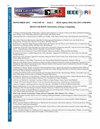利用随机森林生成预测浮选铜回收率的建议
IF 1.3
4区 工程技术
Q3 COMPUTER SCIENCE, INFORMATION SYSTEMS
引用次数: 0
摘要
在铜矿开采行业,数据科学(DS)技术和机器学习(ML)方法有助于改善工业流程中的结果预测。本文介绍了利用浮选过程的历史数据应用数据科学(DS)技术和机器学习(ML)算法的经验。这些数据是利用智利安托法加斯塔北天主教大学开发的浮选设备原型收集的。为了实现这一结果,采用了提取、转换和加载(ETL)流程。此外,为了提高对领域动态的理解,并选择浮选过程中最相关的预测变量,还开发了一个随机森林(FR)模型。结合之前的研究成果,我们就如何管理预测变量提出了建议,以提高浮选设备原型的铜回收率。本文件介绍了方法的细节,并描述了获得上述结果的过程。随着两次迭代的进展,由 RF 生成的预测模型所获得的结果质量不断提高。最后,准确率达到了 94.44%,每个类别的准确率都超过了 90%。这些结果证明了预测模型的有效性和卓越性能。与工业 4.0 背景下的其他类似研究相比,这些数值极具竞争力。本文章由计算机程序翻译,如有差异,请以英文原文为准。
Random forest for generating recommendations for predicting copper recovery by flotation
In the copper mining industry, Data Science (DS) techniques and Machine Learning (ML) methods are contributing to improve the prediction of results in industrial processes. In this paper, an experience of applying both DS techniques and a ML algorithm, using historical data from the flotation process is described. These data were collected using a prototype of flotation equipment developed at the Universidad Catolica del Norte, in Antofagasta, Chile. To achieve the result an Extraction, Transformation and Load (ETL) process was made. Also, for both, improving the understanding of domain dynamics and selecting the most relevant predictive variables in the flotation process, a Random Forest (FR) model was developed. The combination of these previous results made it possible to generate recommendations on the management of predictor variables to improve copper recovery in the context of the flotation equipment prototype. In this document, the methodological details are presented, and the process used to obtain the aforementioned results is described. As progress was made through 2 iterations, the quality of the results obtained with the predictive model, generated by RF, was improving. At the end of the process, an accuracy of 94,44% was achieved, with an accuracy in each of the classes greater than 90%. These results demonstrate the effectiveness and outstanding performance of the predictive model. These values are highly competitive when compared to those obtained in other similar studies in the context of Industry 4.0.
求助全文
通过发布文献求助,成功后即可免费获取论文全文。
去求助
来源期刊

IEEE Latin America Transactions
COMPUTER SCIENCE, INFORMATION SYSTEMS-ENGINEERING, ELECTRICAL & ELECTRONIC
CiteScore
3.50
自引率
7.70%
发文量
192
审稿时长
3-8 weeks
期刊介绍:
IEEE Latin America Transactions (IEEE LATAM) is an interdisciplinary journal focused on the dissemination of original and quality research papers / review articles in Spanish and Portuguese of emerging topics in three main areas: Computing, Electric Energy and Electronics. Some of the sub-areas of the journal are, but not limited to: Automatic control, communications, instrumentation, artificial intelligence, power and industrial electronics, fault diagnosis and detection, transportation electrification, internet of things, electrical machines, circuits and systems, biomedicine and biomedical / haptic applications, secure communications, robotics, sensors and actuators, computer networks, smart grids, among others.
 求助内容:
求助内容: 应助结果提醒方式:
应助结果提醒方式:


